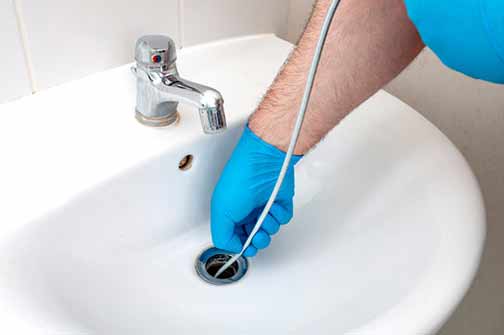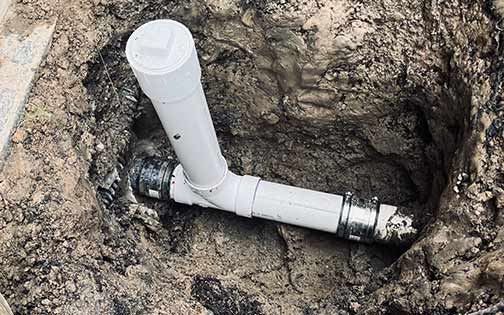
Sewer line problems are a big deal, especially when issues make it necessary to repair a section or the entire length of your main sewer line. When problems like this happen in your home, there is no way to get around the high cost of fixing the issue or the inconvenience that comes with it.
But, Fireside Property Management team notes that it does help to have some background knowledge on the cause of the problems, the available solutions, how much those solutions cost and the possibility for a future reoccurrence of the problem.
In this post, we look at the common issues homeowners in Downers Grove, IL, grapple with about the function, maintenance and repair of their sewer lines. The post will explain the root causes of sewer line problems and different repair or replacement options for damaged sewer lines.
Common causes of sewer line damage
Clogs and blockages
Dumping the wrong things into your home’s drains is, by far, the biggest cause of sewer line problems. Prohibited items or materials that should never enter a sewer line include fats, oils, grease, starchy foods, stringy vegetables, diapers, wipes, paper towels, etc.
Tree roots
Tree roots are an unlikely but common cause of sewer line problems. Invasive tree roots can work their way around a sewer line, moving it out of place and making it prone to leaks and clogs. Tree roots can also penetrate the walls of the sewer line, damaging it.
Pipe corrosion
This is a major problem for metal pipes since they are vulnerable to rust. Non-metal sewer lines can also suffer from corrosion, especially as they age. Mineral deposits inside a pipe, hard water, and chemical reactions between the pipe and its contents can cause corrosion.
Extremely cold temperatures
In most cases, this is only a problem when the pipe or a part of it, is not buried below the frost line. Low winter temperatures can freeze a sewer line. That will cause the wastewater inside the line to expand, thereby exerting enough pressure to crack the sewer line.
Sewer line misalignment
Sewer lines are designed to have a certain amount of slope throughout their length to allow water to flow under the force of gravity. If the proper slope is absent –due to soil movement, ground settling, or improper installation- the sewer line will malfunction.
Sewer line bellies
A bellied sewer line is when a section of the line has sagged, leading to poor drainage and blockages. Sewer line bellies are caused by ground movement, soil settling and poor installation. In some cases, they are caused by severe pipe corrosion.

Should you repair or replace your sewer line?
Whether you should repair or replace your damaged sewer line depends on the kind of damage and the extent of the problem. Here are a few guidelines to follow when making this decision.
If the problem is concentrated in a small section of the sewer line and has been reoccurring, you may need to replace the affected section. That is because if a sewer line has suffered the same problem in the same general area more than once, subsequent repairs for that similar issue will become more expensive and less effective.
If more than 50% of the sewer line is showing signs of damage – fractures, holes, corroded sections, or other problems – that is a solid sign that the entire sewer line is failing. In this case, a total sewer line replacement makes more economic sense.
If the repair cost for the section of the damaged sewer line is comparable to the cost of replacing it, it is better to replace the sewer line. It is sensible to spend a little more to replace a damaged sewer line if this will let you avoid future problems.
Sewer line repair options for homeowners in Downers Grove, IL
There are two major options for repairing a damaged sewer line: traditional excavation methods and trenchless repair methods.
Traditional excavation method
With this method, a trench is dug along the path of the sewer line to access, inspect and repair it. This method is time-consuming, invasive and costly. In addition to the cost of fixing the damaged sewer line, homeowners have to repair their torn-up landscaping.
Trenchless sewer line repair
These are innovative methods that do not require excavation, and as a result, they are non-invasive, time-saving and more affordable. The two most common types of trenchless sewer repair are pipe bursting and lining.
For most sewer line repair projects, a trenchless method will work just fine. But to choose the appropriate trenchless repair method for your sewer line, it is essential to understand the pros and cons of pipe bursting and pipe lining as it concerns sewer line issues.
That is why it is essential to work with a professional Dowers Grove plumber who is familiar with the common sewer line problems in the Downers Grove area. Typically, the plumber should perform a camera inspection on your sewer line to fully understand the sewer line issues before recommending a solution.
—
Having issues with your sewer line in the Downers Grove area and need assistance? Contact us today at 708-801-6530 or by form below:
[gravityform id=”1″]

